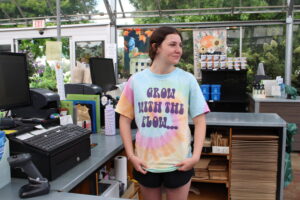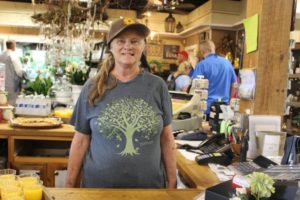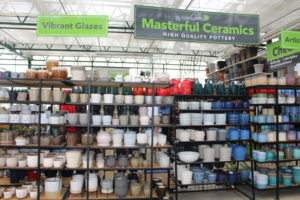Making Dreams a Reality
Ideas are swirling around the industry to collaborate on a nationwide grassroots marketing campaign instead of competing against one another for business.
Dreams that have conviction and passion behind them have a chance to become reality, if enough people share the vision.
Over the years, there’s been lots of discussion on the need for our industry or even individual product categories or retail channels to have a national marketing and advertising presence, much like the dairy industry’s “Got Milk?” campaign or the pork industry’s “The Other White Meat” campaign. And even when we had the start of one, the Promoflor cut flower initiative that was launched in the late 1990s, industry politics and channel jealousy stopped it dead in its tracks, canceling its funding after a short run, despite the fact that it was showing positive results on consumer purchasing.
And there are other reasons why a national promotion order would have a problem succeeding in our industry. Among them: the extremely high investment; the fact that the funding would have to come solely from producers/first handlers and legislatively wouldn’t have to be shared by the rest of the demand chain; the fact that many of our categories are seasonal, and the consumer would have to be re-educated on our message each year. And most importantly, our industry doesn’t behave like an industry, a critical factor that prevents us from harnessing our collective power to create mutual benefit and positioning ourselves to the consumer as an industry. Rather, we operate as competitors, whether by category (annuals versus cut flowers) or by retail channel (IGCs versus mass marketers, or retail florists versus supermarkets). We expend more resources and effort on positioning our selfish interests internally and to the consumer than we do on promoting our industry and product benefits to the consumer, where we can build consumption.
As an industry, we spend millions of dollars each year advertising to the consumer. But most of these dollars are spent telling the consumer to buy my stuff rather than the other guys’, and the primary reason for buying at my place rather than yours is based on price. There’s very little consumer communication on selling the merits and benefits because of the intrinsic benefit of our industry’s product versus all of the other product options the consumer has. The net result: We’re swapping business between ourselves and not building real consumption of our products. Please don’t take my comments wrong; because of the competitive nature of the marketplace, you need to be promoting and advertising to drive consumers through your front door. But what are we doing as an industry to help build consumption and expand the marketplace for all of us?
Is there a way for us to start acting like an industry and harness our collective voice to promote the benefits our products offer to the consumer in a cost-effective manner that can transcend organizational politics and jealousies?
I think there could be, and the time is ripe for it!
At the Seeley Conference, an industry think-tank held in June at Cornell University, there was a lot of discussion on how we can better communicate with our consumers, our core boomers as well as our future consumers, generations X and Y. I think consensus was reached that it would be far easier and more effective if, as an industry rather than as individual companies, we worked together to build consumption and promote the real benefits of our products and industry. And even before this conference, two industry veterans, Laurie Scullin and Frank Zaunscherb, were sketching out some ideas on how to cost effectively promote industry messaging.
The concept that’s being discussed goes by a few different names, namely guerilla and grassroots marketing. The premise behind this idea is using nontraditional marketing concepts and activities implemented as close as possible to the consumer to better position our products/industry to influence their perception and build incremental demand. It uses social media (Facebook and Twitter, among others), and other low-intensity but high-frequency methods of communication that, when fully implemented by enough growers and retailers, generates powerful word-of-mouth promotion. It has a viral effect, where each person who learns and experiences something positive tells their friends, who then do the same.
One Possible Scenario
The industry identifies a messaging phrase that encompasses all product categories and retail venues something neutral yet powerful that we can all get behind. There are traits and product benefits that all retailers can support: the emotional, psychological and physiological power of our products already identified through independent university research, the positive effect our products have on the quality of life. It’s really a matter of prioritizing the messages and finding out which resonates best with the broadest audience.
Once we identify this message, growers and retailers voluntarily promote it to their customers by applying it to tags and pots, sleeves and signs, trucks and uniforms, websites and newsletters, and maybe an institutional banner in your ads. And there would also be an industry website that provides the detail behind the message, a library of information that explains it and puts some meat to the simple message. Individually, the message is very low intensity (and very low cost), but when the consumer sees it repeatedly through all of the different delivery systems, the cumulative effect is extremely powerful. I equate it to a positive form of Chinese water torture: You don’t feel the first drop, but after multiple drops hit in the same spot, you really feel it!
In no way does a grassroots program replace or compete with your existing advertising to your customers. It overlays onto your existing company consumer messages.
It Can Be Done
There’s precedent for this kind of low-cost, low-intensity grassroots marketing. Remember the “Fall Is for Planting” campaign that ANLA created more than 20 years ago to promote our “second season” for sales? Though this campaign hasn’t been actively promoted for many years, the residual effect is still there; consumers who were exposed to it then still recall the message.
One key to the success of a grassroots campaign is wide adoption by retailers in all channels and growers/producers of all categories; the more involvement and support from the industry at large, the more impressions communicated and the faster we realize the cumulative effect of our efforts.
This concept is in its infancy, and there are still a lot of details to work through, but I think we have the germ of something that the entire industry can get involved in, with powerful potential. Stay tuned for more information as this program is more broadly discussed. If you have any ideas or comments on how to make this work, e-mail me at [email protected].
My dream isn’t just for me; it’s a dream for our industry finally to start working together to communicate and promote the incredible benefits our products have for our consumers’ lives.
Now could be the right time to turn the dream into reality…


















 Videos
Videos





